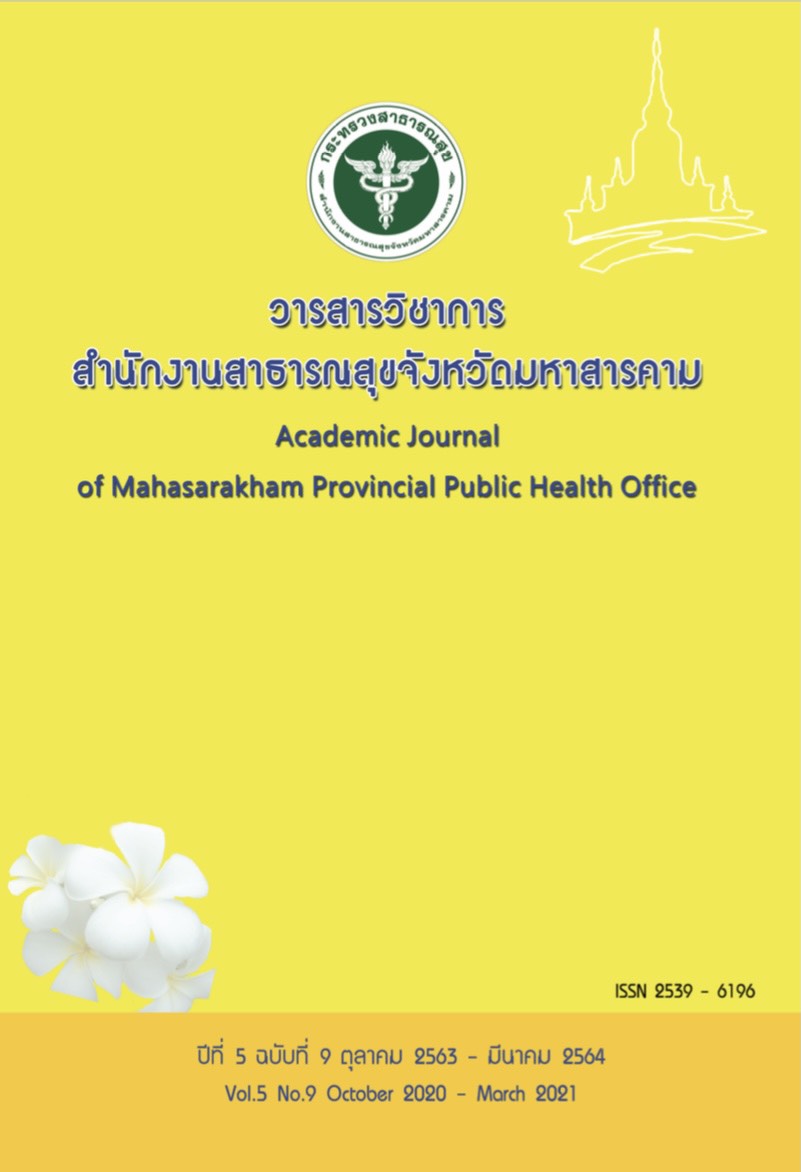The Development of a Model of Care for Patients with Sepsis, Wapipathum Hospital
Abstract
Abstract
Sepsis is a condition in which there is an infection from various organs of the body. The infection could also enter either to the bloodstream or from bloodstream infection directly, which are caused by many possibly risky factors. Regarding to these kinds of bloodstream infection, it may result in a severe risk of death. This action research aims to develop a model of care for patients with sepsis, Wapipathum Hospital.The study was conducted in three phases: 1) situational analyses phase of 194 patients diagnosed with bloodstream infection and 12 multidisciplinary teams. 2) development phase, trial model and put into action among 114 patients with sepsis and 97 multidisciplinary teams, and 3) a model evaluation phase in 196 blood-infected patients. The research instruments included an electronic database from HOSxP program, Wapipathum Hospital, patient medical record form question for in-depth interviews, question for focus group discussion, participatory observations from, and outcomes record form. The data were analyzed using descriptive statistics: frequency, percentage, and mean, and qualitative analysis using content analysis.
The results revealed that there are eight elements: 1) set up the committee for health service system development branch of sepsis 2) having the guidelines for caring for patients with bloodstream sepsis 3) having the screening for sepsis fast track 4) set up a treatment plan for Sepsis Wapipathum 5) having septic shock nursing guideline 6) having consultation system 7) schedule the diagnosis data entry and 8) reviewing patient records by a medical specialist. After the use of a care model for patients with sepsis, the rate of patients with sepsis decreased from the original 102 cases in 2018 to 94 cases in 2019, representing 7.8%, 100% of the patients were then Hemoculture before antibiotic treatment, 100% received antibiotic within 1 hour after diagnosis and 100% at least 30 cc/Kg. Intravenous fluids in the first hour (if no IV. Contraindications), the rate of referral to sepsis patients decreased from 30.59% in 2018 to 25% in 2019, and no mortality rate for sepsis.
Keywords: Care models, sepsis, septic shock


